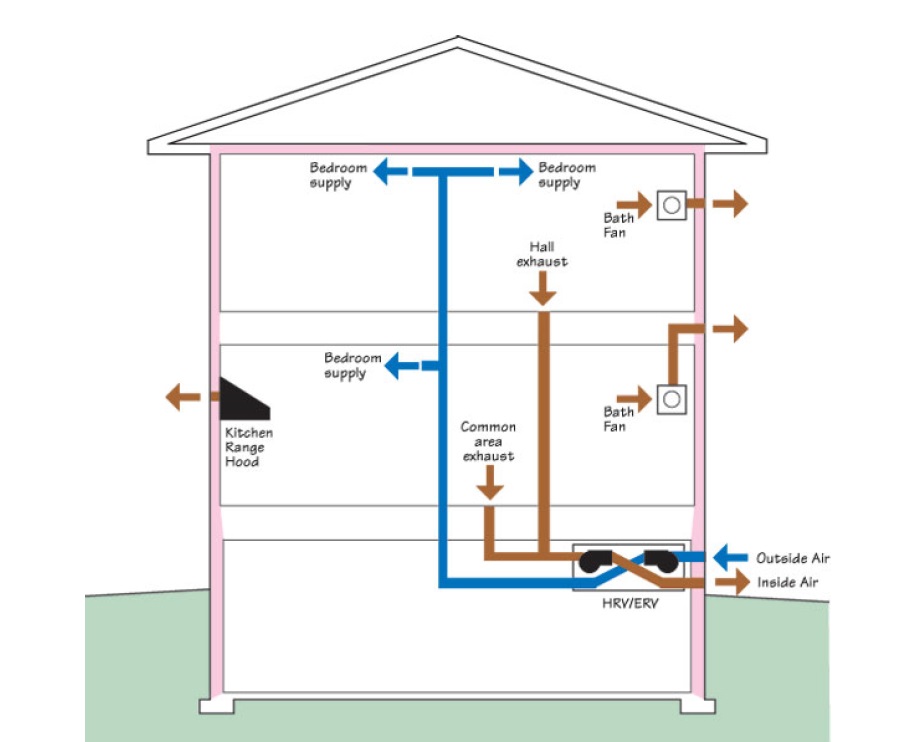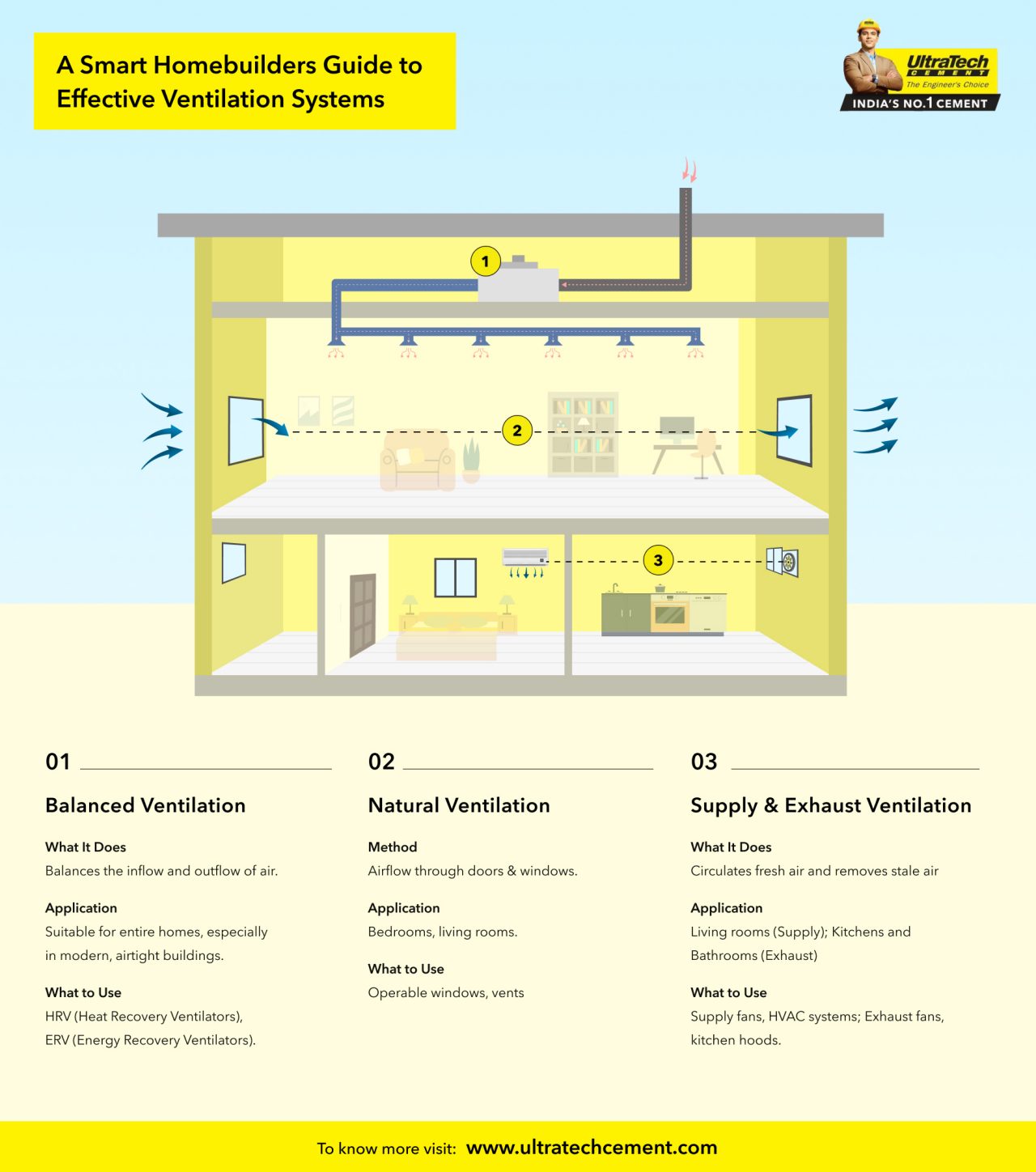Recognizing the Significance of Home Air Flow for a Healthier Living Environment
Home ventilation plays an important function in maintaining a healthy living atmosphere. It facilitates the exchange of indoor and exterior air, which is necessary for boosting air top quality. Without appropriate air flow, homes can end up being reproducing grounds for pollutants and allergens. The repercussions of poor air circulation can be substantial. This brings up the inquiry of exactly how homeowners can effectively carry out ventilation methods to safeguard their wellness and wellness. Comprehending these approaches is imperative.

The Basics of Home Ventilation
Home air flow works as an essential component of indoor air top quality and convenience. It includes the procedure of exchanging stale interior air with fresh exterior air, therefore lowering humidity and managing temperature. Correct ventilation systems can include natural techniques, such as open windows and vents, along with mechanical systems, such as exhaust followers and air exchangers. Reliable home ventilation aids avoid concerns like interior mold growth and the build-up of hazardous fragments. It likewise enhances general energy effectiveness, as well-ventilated rooms can keep comfy temperatures with less reliance on heating and cooling systems. Understanding the basics of home ventilation is crucial for house owners seeking to create a healthier living environment for themselves and their households.

Common Resources of Indoor Air Air Pollution

Although lots of might not recognize it, indoor air contamination can originate from different resources within a house. Typical contributors consist of volatile natural compounds (VOCs) produced from paints, solvents, and cleaning items. Family devices, such as gas ranges and fireplaces, can release harmful gases like carbon monoxide gas and nitrogen dioxide. Furthermore, mold and mildew and mildew grow in moist locations, releasing spores that affect air top quality. Animal dander, allergen, and pollen can collect indoors, more aggravating pollution degrees. Cigarette smoking inside your home creates hazardous chemicals that linger airborne. Lastly, developing materials, including asbestos and formaldehyde, can off-gas hazardous compounds. Identifying these resources is necessary for preserving a much healthier interior atmosphere and promoting efficient ventilation techniques.
Wellness Impacts of Poor Ventilation
Indoor air contamination can have significant wellness ramifications, specifically when air flow is insufficient. Poor air flow can cause the accumulation of dangerous toxins, such as unstable natural substances, mold and mildew, and particulate matter. This build-up might result in respiratory system concerns, including bronchial asthma, allergies, and persistent obstructive lung disease. Individuals may experience signs and symptoms like migraines, exhaustion, and inflammation of the eyes, nose, and throat. Susceptible populaces, such as this contact form youngsters and the senior, are at higher threat for severe wellness results. Long-lasting direct exposure to improperly aerated atmospheres can also add to a lot more severe problems, consisting of heart diseases. As a result, making certain appropriate air flow is essential for keeping a healthy living setting and lowering the threat of wellness problems connected with interior air contamination.
Effective Air Flow Strategies for Your Home
Appropriate ventilation is crucial for maintaining a healthy and balanced indoor setting, and implementing effective strategies can considerably improve air quality. Home owners can start by making certain that exhaust followers are mounted in shower rooms and kitchens to remove excess wetness and smells. Opening up windows frequently allows fresh air to distribute, particularly throughout mild weather condition. Additionally, utilizing air purifiers with HEPA filters can aid catch airborne pollutants. For homes with home heating and cooling down systems, preserving a/c systems and altering filters on a regular basis is crucial for peak performance. Incorporating all-natural ventilation methods, such as cross-ventilation, can additionally boost airflow. Securing any type of leakages in doors and windows avoids undesirable drafts, which can disrupt controlled air flow, ultimately leading to improved indoor air quality and convenience.
Keeping Optimum Air Quality Year-Round
To maintain excellent air quality year-round, house owners should embrace a proactive technique to handling their indoor atmosphere. Frequently checking indoor air quality is critical; this consists of monitoring for pollutants such as dirt, mold, and volatile organic compounds (VOCs) Applying effective ventilation systems, such as exhaust followers and air cleansers, can significantly decrease air-borne impurities. In addition, regular maintenance of heating and cooling systems warranties peak performance and air flow. Home owners should additionally consider humidity degrees, as excessive moisture can result in mold basics growth. Seasonal adjustments may demand modifications in ventilation techniques to suit varying exterior air top quality. By prioritizing these practices, homeowners can produce a much healthier living room, promoting total well-being for all owners throughout the year.
Often Asked Inquiries
Exactly How Can I Tell if My Home Needs Better Air Flow?
To identify if a home calls for much better air flow, one need to observe indications such as relentless humidity, mold and mildew development, mildewy odors, condensation on windows, or enhanced allergic reaction symptoms, showing poor air flow and possibly inadequate indoor air top quality.
What Are the Indicators of Poor Indoor Air Quality?

Can Houseplants Improve Indoor Air Top Quality Properly?
The performance of houseplants in enhancing indoor air top quality is disputed. While some studies recommend they can take in toxins and create oxygen, their total impact might be minimal compared to proper ventilation and air purification systems.
Just how Usually Should I Modification My Air Filters?
The frequency of air filter changes normally depends upon use and filter type. Typically, it is suggested to change filters every three months, though houses with allergic reactions or animals may need more frequent changes for optimal efficiency.
Exist Any Certain Ventilation Solutions for Allergy Sufferers?
Many ventilation systems, such as HEPA-filtered units, successfully minimize allergens airborne. Home Ventilation Melbourne. These systems trap pet dog, dust, and pollen dander, providing allergic reaction patients with a cleaner, healthier indoor environment while handling air high quality effectively
It facilitates the exchange of indoor and outside air, which is essential for improving air high quality. Home air flow serves as a necessary part of interior air top quality and comfort. It entails the process of trading stagnant interior air with fresh exterior air, thus lowering humidity and managing temperature. Interior air pollution can have substantial health and wellness effects, specifically when ventilation is inadequate. Correct air flow is vital for preserving a healthy interior setting, and applying reliable techniques can significantly boost look at this now air high quality.